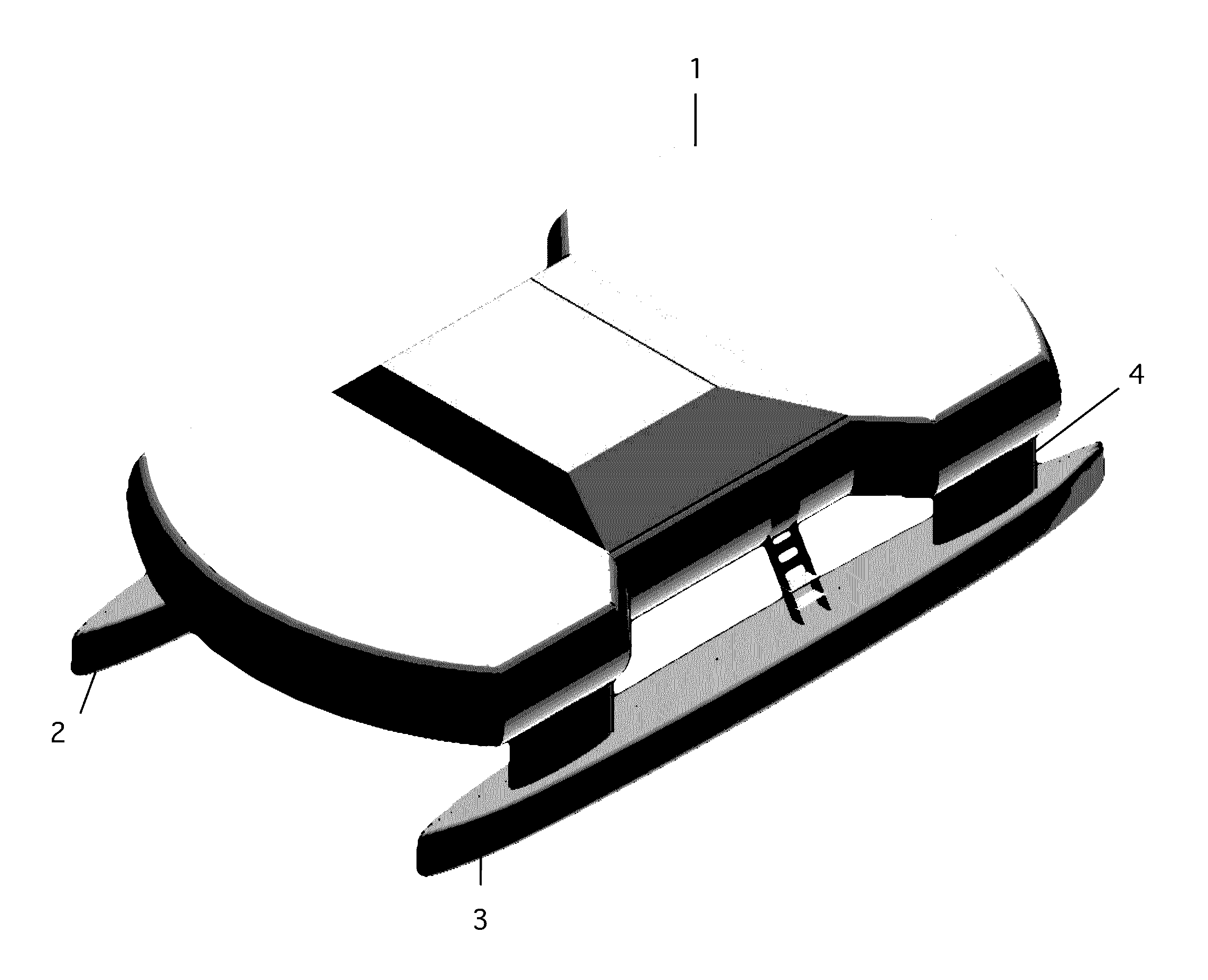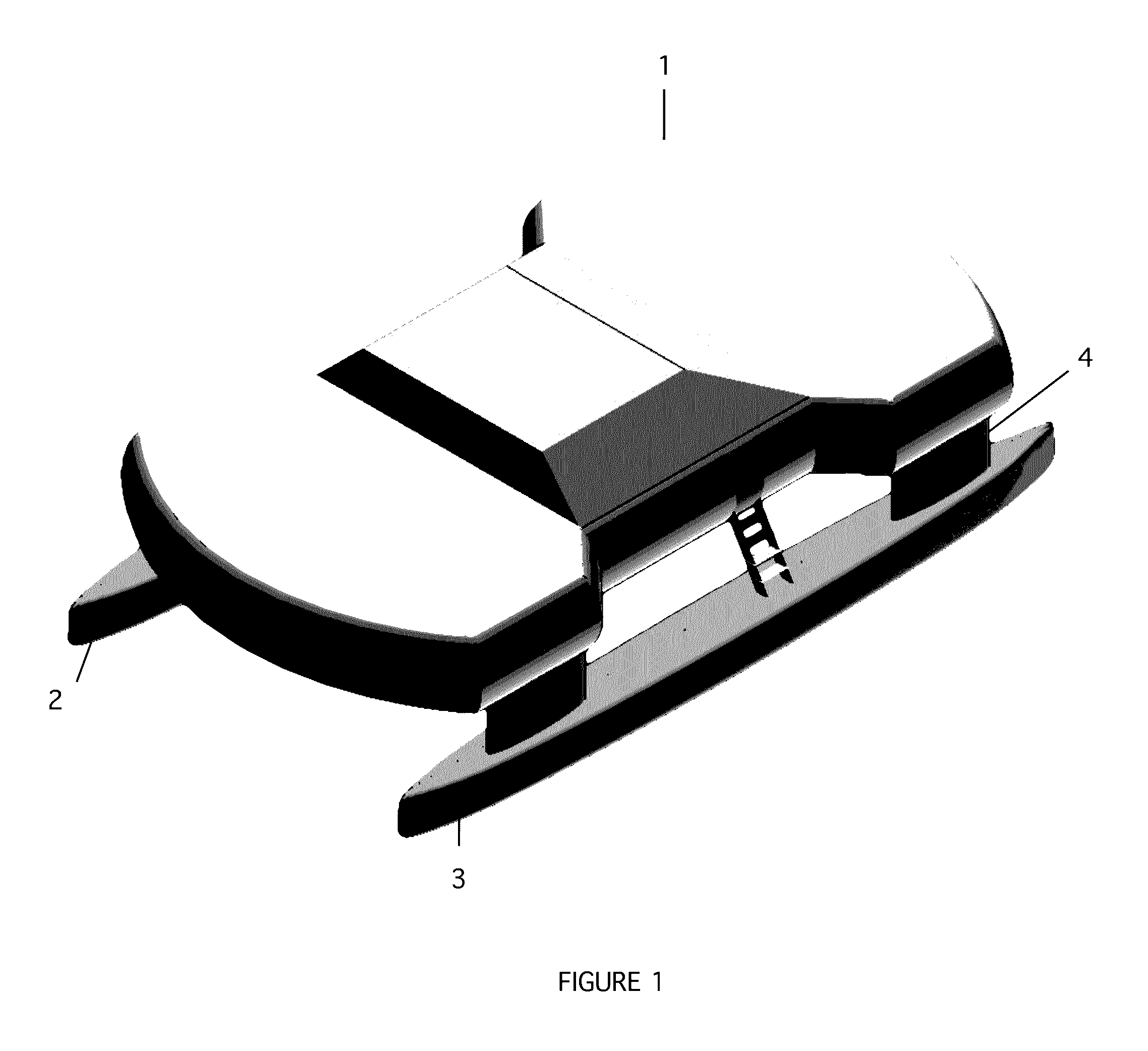Multihull Watercraft
a multi-hull, watercraft technology, applied in the direction of special-purpose vessels, marine propulsion, vessel construction, etc., can solve the problems of narrow monohull, narrow hull, lateral stability, and a greater risk of capsize, so as to improve interior ventilation, improve thermal isolation, and improve the effect of interior ventilation
- Summary
- Abstract
- Description
- Claims
- Application Information
AI Technical Summary
Benefits of technology
Problems solved by technology
Method used
Image
Examples
Embodiment Construction
[0027]FIG. 1 illustrates an embodiment of the present invention in a powerboat configuration (without sails). A large upper hull 1 is suspended over a left float hull 2 and right float hull 3 by means of four support structures 4. The wide support structures shown in FIG. 1 may be improved by utilizing two or more narrow beams per support structure, which allows lateral air flow and thereby reduces lateral windage. The improved support structure 4 is shown in FIG. 2.
[0028]The top-view diagram in FIG. 3 illustrates the relative width of the upper hull 1 in comparison to the twin float hulls 2 and 3. The forward and aft portions of the upper hull enclose the passenger cabins, and extend laterally beyond the longitudinal centerline of the left and right float hulls to maximize the accommodation space. The middle portion of the upper hull encloses the common areas (salon, galley, storage, etc), and is constrained to the region inboard of the longitudinal centerline of the left and right...
PUM
 Login to View More
Login to View More Abstract
Description
Claims
Application Information
 Login to View More
Login to View More - R&D
- Intellectual Property
- Life Sciences
- Materials
- Tech Scout
- Unparalleled Data Quality
- Higher Quality Content
- 60% Fewer Hallucinations
Browse by: Latest US Patents, China's latest patents, Technical Efficacy Thesaurus, Application Domain, Technology Topic, Popular Technical Reports.
© 2025 PatSnap. All rights reserved.Legal|Privacy policy|Modern Slavery Act Transparency Statement|Sitemap|About US| Contact US: help@patsnap.com



